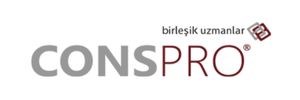


Would you prefer an ordinary accounting software and construction management software for your company? Or do you want to use Microsoft Dynamics 365 Finance and Operations (F&O) ERP and construction management module within it ? Here is a detailed comparison to help you make an informed decision. In this article we have prepared for you, we will compare these two systems. In this way, you will see the differences of this construction software used with Dynamics 365 F&O.
Accounting software that is suitable for some user groups, even if it is new to the market or has been in use for a long time, can of course attract many users. With this combination, of course, you can provide use in areas such as financial monitoring, integration, cost flow. If companies choose this combination according to their budget, the features they will have will be as follows.
Sometimes, highly corporate companies with strong operational capabilities may require the most comprehensive software. D365 F&O is an extensive Enterprise Resource Planning (ERP) solution designed to manage and optimize business processes, containing various modules. This platform consolidates all operational processes under one roof for large and medium-sized enterprises. It allows control of finance, supply chain, production, sales, human resources, and other operational processes from a single point on cloud technology. Due to future-oriented reasons, such as the company's continuous growth, you may need to switch to higher-budget software. Here are the benefits you'll receive if you use Microsoft Dynamics 365 Finance and Operations (F&O) along with the Construction Management Module:
a. Business Size and Growth: Simple accounting and construction software may suffice for small and medium-sized businesses with basic needs. For larger or rapidly growing businesses, D365 F&O's scalability and advanced features may be more suitable.
b. Budget: Consider initial and ongoing costs, including software, implementation, training, and support.
c. Operational Complexity: Assess the complexity of your business processes and whether they would benefit from an integrated, comprehensive ERP solution.
d. Integration Needs: Determine the importance of seamless integration between accounting, construction management, and other business functions.
e. IT Resources: Evaluate the availability of IT support and the organization's capacity to manage complex software solutions.
f. User Competency: Consider your team's technical proficiency and need for training and support.
In summary, a combination of simple accounting software and construction software can be a cost-effective and user-friendly solution for small businesses with less complex needs. On the other hand, Microsoft Dynamics 365 F&O and the construction management module offer a comprehensive, scalable, and integrated solution ideal for larger businesses or those with more complex operations and growth objectives.
|
Criteria |
Simple Accounting Software + Construction Software |
Microsoft Dynamics 365 F&O with Construction Management Module |
|
Cost |
Lower initial investment |
Higher initial investment and ongoing subscription fees |
|
Ease of Use |
User-friendly, easier for non-technical staff |
More complex with a steeper learning curve |
|
Implementation Time |
Faster setup and deployment |
Longer and more complex implementation process |
|
Functionality |
Basic features tailored to specific needs |
Comprehensive features with advanced analytics and automation |
|
Scalability |
Limited scalability |
Highly scalable to grow with the business |
|
Integration |
Potential integration challenges |
Seamless integration across finance, operations, and construction |
|
Customization |
Limited customization options |
Highly customizable to fit specific business processes |
|
Real-Time Data |
Limited real-time capabilities |
Provides real-time insights for better decision-making |
|
Cloud-Based |
Varies by software |
Cloud-based, accessible from anywhere |
|
IT Support |
Requires less IT support |
May require dedicated IT resources for support and maintenance |
|
Security and Compliance |
Basic security features |
Strong security features and compliance with industry standards |
|
Training Requirements |
Minimal training needed |
Requires robust training and change management |
|
Suitability for Small Businesses |
Ideal for small to medium-sized businesses |
May be overkill for small businesses with simple needs |
|
Suitability for Large Businesses |
May not meet complex needs of large businesses |
Ideal for larger businesses with complex operations |
|
Integration with Other Systems |
May require manual data entry between systems |
Provides unified platform with integrated data |